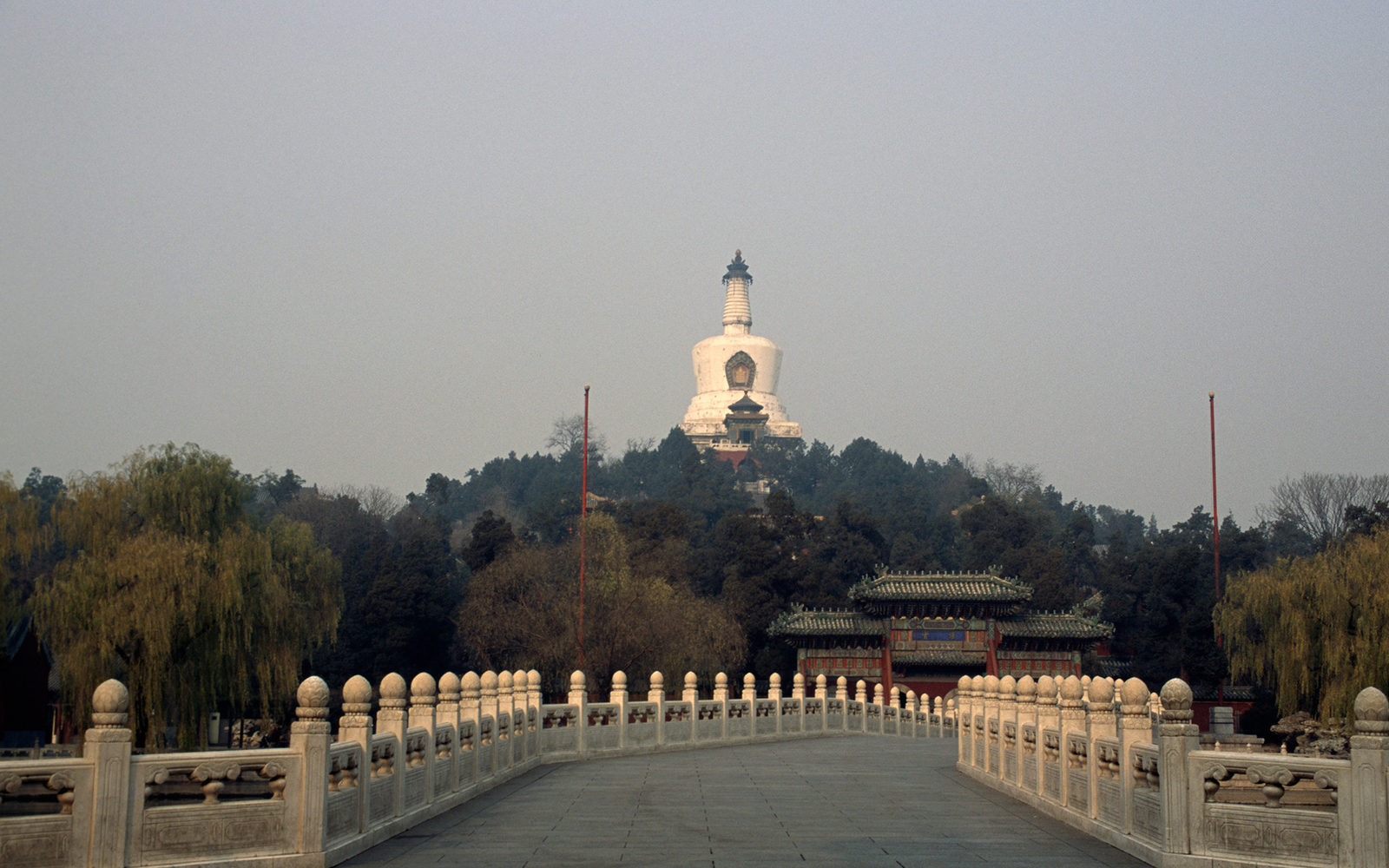
Spending a thrifty weekend in one of the world's most populous cities is not only possible—it's downright easy.
Though the cost of living is rising in Beijing, there are still plenty of cheap thrills and free experiences to be had in China's capital. Spend a weekend exploring its history and art through former imperial gardens, fast-disappearing hutong neighborhoods, and vibrant creative communities.
Starts off the adventure at the southern end of Nanluoguxiang, a preserved hutong dating from the Yuan Dynasty (1271-1368) that is now one of the busiest tourist streets in Beijing. Accessible from exit E of Nanluoguxiang subway station (Line 6), Nanluoguxiang is home to bustling shops, cafes, bars, and snack stands, and is a good place to pick up souvenirs like ceramic teapots and kitschy t-shirts. The half-mile lane can get crowded—especially during major Chinese holidays like Spring Festival and the October golden week—but it is criss-crossed by much quieter hutongs boasting their own charm.
At the intersection of Nanluoguxiang and Beibing Masi Hutong, there is a hole-in-the-wall eatery called Tianjinwei Jianbing Guozi selling jianbing, a type of egg-filled pancake that is quintessential breakfast and street food. This particular stall makes Tianjin-style jianbing, which features youtiao (a strip of fried dough) instead of the usual baocui (a deep-fried cracker). A jianbing costs $0.65 to $0.80.
Nanluoguxiang intersects with Gulou East Street, a major thoroughfare named after the Drum Tower that used to serve as the city's official timekeeper. From there, walk east to Cafe Zarah, a long-standing cafe and restaurant with an airy courtyard and an extensive menu. At $4 to $7, the coffee is a relative splurge.
While you sip, walk the area at your own pace. Gulou East Street and the smaller hutongs that intersect it contain boutiques, cafes, and restaurants ranging from minimalist to eccentric. Hutongs worth strolling through include Beiluoguxiang (Beiluo Bread Bar, Mai Bar), Baochao Hutong (Modernista, Mr. Shi's Dumplings), and Doujiao Hutong (Great Leap #6).
At a Y-intersection with Di'anmen Street and Gulou West, you'll find the Drum Tower and its immediate neighbor, the Bell Tower. If you can handle the steep stairs, they're worth climbing for the views of Beijing. A ticket gets you access to both for about $5.
For lunch, there are many inexpensive restaurants along Di'anmen Street. Huatian Emei Jiujia (155 Di'anmen St., Dongcheng District; 86 10 6404 3097) offers faithful renditions of Sichuan dishes like yuxiang qiezi (fish-fragrant eggplant), koushui ji (mouth-watering chicken), and sweet-and-sour soup, for about $3 to $6 per plate.
Just a short walk from the restaurant is Beihai Park, a former imperial garden that was turned into a public park in 1925. You can go boating on the central lake in battery- or pedal-powered boats shaped like rubber ducks and lotus flowers. Don't miss seeing the Nine-Dragon Screen dating from 1402 and the 131-foot White Dagoba on Jade Flower Island (pictured). Admission to the park costs less than $2 per person.
If you exit from the east gate of Beihai Park you'll head straight to Jingshan Park. The pavilion that sits atop the towering artificial hill in the middle of the park offers 360-degree views, including the Forbidden City, Beihai Park, and the Drum Tower.
Cap off this day of historical sightseeing with a meal at the city's first privately owned restaurant. Founded in 1980, Yuebin Restaurant (43 Cuihua Hutong, Dongcheng District; 86 10 8511 7853) is an unassuming eatery that is still owned by the founder's family. The menu is entirely in Chinese, but all specialties are on the first page. Good bets include the guota doufu (stuffed tofu) or wusi tong (meat and cabbage rolls).
Your second day is all about art, starting with 798 Art District in the northeast corner of Beijing. This famous community is housed in a series of Bauhaus-style munitions factories from the 1950s, which artists started moving into in the mid-1990s in search of cheap studio spaces. Since the area's rapid gentrification in the early 2000s, unchecked rent increases have forced out the many artists who contributed to 798's cultural rebirth.
Despite this, the neighborhood attracts local and foreign tourists alike with its shops, cafes, restaurants, colorful graffiti, and serious art galleries like UCCA, 798 Space, Galleria Continua, and Pace Gallery. Most are free.
Around a 10-minute cab ride away, there is the lesser-known artistic community of Caochangdi. Its first and most famous tenant was Ai Weiwei, who first moved out to the sleepy village to establish his studio and the China Art Archives and Warehouse (CAAW). The atmosphere at Caochangdi is much more subdued compared to its more famous neighbor, but respected centers like Three Shadows Photography Art Centre, Galerie Urs Meile, Pekin Fine Arts, Beijing Art Now Gallery (BANG), and Chambers Fine Art make the area worth visiting.
Train fans may want to drop by the China Railway Museum (1 Jiuxianqiao North Road, Chaoyang District; 86 10 6438 1317) just east of Caochangdi. Not to be confused with the branch near Tian'anmen Square, this location is the one that contains actual rolling stock from the 1960s and 1970s, including the steam locomotives that Chinese leaders Mao Zedong and Zhou Enlai rode. Not all taxi drivers know where it is, so have a map and a phone number on hand. Admission costs $3.